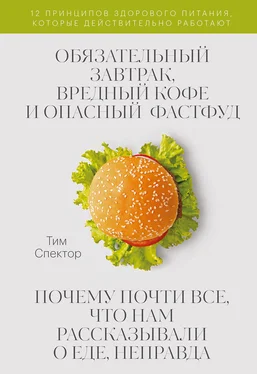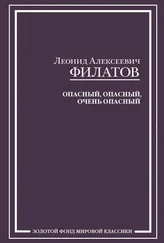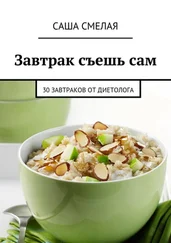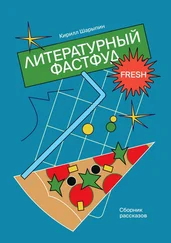Poore J. Reducing food’s environmental impacts through producers and consumers // Science. 2018. Vol. 360. Pp. 987–992.
Searchinger T. D. Assessing the efficiency of changes in land use for mitigating climate change // Nature. 2018. Vol. 564. Pp. 249–253.
Monbiot G. We can’t keep eating as we are — why isn’t the IPCC shouting this from the rooftops? // The Guardian. 9 August 2019.
Mesnage R. Facts and fallacies in the debate on glyphosate toxicity // Frontiers in Public Health. 2017. Vol. 5. P. 316.
iarc.fr/wp-content/uploads/2018/07/MonographVolume112–1.pdf(20 March 2015).
Webster B. Weedkiller scientist was paid £120,000 by cancer lawyers // The Times. 18 October 2017.
Mills P. J. Excretion of the herbicide glyphosate in older adults between 1993 and 2016 // JAMA. 2017. Vol. 318. No. 16. Pp. 1610–1611.
Tarazona J. V. Glyphosate toxicity and carcinogenicity: a review of the scientific basis of the European Union assessment and its differences with IARC // Archives of Toxicology. 2017. Vol. 91. No. 8. Pp. 2723–2743; Portier C. J. Update to Tarazona et al. (2017): glyphosate toxicity and carcinogenicity: a review of the scientific basis of the European Union assessment and its differences with IARC // Archives of Toxicology. 2018. Vol. 92. No. 3. P. 1341.
Chang E. T. Systematic review and meta-analysis of glyphosate exposure and risk of lymphohematopoietic cancers // Journal of Environmental Science and Health, Part B. 2016. Vol. 51. No. 6. Pp. 402–434.
Gillezeau C. The evidence of human exposure to glyphosate: a review // Environmental Health. 2019. Vol. 18. No. 1. P. 2; Leon M. E. Pesticide use and risk of non-Hodgkin lymphoid malignancies in agricultural cohorts from France, Norway and the USA: a pooled analysis from the AGRICOH consortium // International Journal of Epidemiology. 2019. Vol. 48. No. 5. Pp. 1519–1535.
Hu L. The association between non-Hodgkin lymphoma and organophosphate pesticides exposure: a meta-analysis // Environmental Pollution. 2017. Vol. 231. Pp. 319–328.
González-Alzaga B. A systematic review of neurodevelopmental effects of prenatal and postnatal organophosphate pesticide exposure // Toxicology Letters. 2014. Vol. 230. No. 2. Pp. 104–121; Chiu Y. Association between pesticide residue intake from consumption of fruits and vegetables and pregnancy outcomes among women undergoing infertility treatment with assisted reproductive technology // JAMA. 2018. Vol. 178. No. 1. Pp. 17–26.
Manservisi F. The Ramazzini Institute 13-week pilot study glyphosate-based herbicides administered at human-equivalent dose to Sprague Dawley rats // Environmental Health. 2019. Vol. 18. No. 1. P. 15; Aitbali Y. Glyphosate-based herbicide exposure affects gut microbiota, anxiety and depression-like behaviors in mice // Neurotoxicology and Teratology. 2018. Vol. 67. Pp. 44–49.
Motta E. V. Glyphosate perturbs the gut microbiota of honey bees // PNAS. 2018. Vol. 115. No. 41. Pp. 10305–10310.
Baudry J. Association of frequency of organic food consumption with cancer risk: findings from NutriNet-Santé Prospective Cohort Study // JAMA. 2018. Vol. 178. No. 12. Pp. 1597–1606.
Bradbury K. E. Organic food consumption and the incidence of cancer in a large prospective study of women in the UK // British Journal of Cancer. 2014. Vol. 110. Pp. 2321–2326.
anh-usa.org/wp-content/uploads/2016/04/ANHUSA-glyphosate-breakfast-study-FINAL.pdf(19 April 2016)
Womersley K. Medical schools should be prioritising nutrition and lifestyle education // BMJ. 2017. Vol. 359. P. j4861.
Crowley J. Nutrition in medical education: a systematic review // Lancet Planetary Health. 2019. Vol. 9. P. PE379–E389.
Greenhalgh S. Making China safe for Coke: how Coca-Cola shaped obesity science and policy in China // BMJ. 2019. Vol. 364. P. k5050.
Lean M. E. Primary care-led weight management for remission of type 2 diabetes (DiRECT): an open-label, cluster-randomised trial // The Lancet. 2018. Vol. 391. No. 10120. Pp. 541–551.
ncbi.nlm.nih.gov/pubmed/21366836; Zhu D. The relationship between health professionals’ weight status and attitudes towards weight management: a systematic review // Obesity Reviews. 2011. Vol. 12. No. 5. Pp. e324–337.
nutritank.com; thedoctorskitchen.com.
Aspry K. E. Medical nutrition education, training and competencies to advance guideline-based diet counseling by physicians // Circulation. 2018. Vol. 137. Pp. e821–e841.
McDonald D. American gut: an open platform for citizen science microbiome research // mSystems. 2018. Vol. 3. No. 3. Pp. e00031–18.
joinzoe.com.
Blaser M. J. Antibiotic use and its consequences for the normal microbiome // Science. 2016. Vol. 352. Pp. 544–545.
de Cabo R. Effects of intermittent fasting on health, aging and disease // New England Journal of Medicine. 2019. Vol. 381. Pp. 2541–2551.
US Burden of Disease Collaborators. The state of US health, 1990–2010: burden of diseases, injuries, and risk factors // JAMA. 2013. Vol. 310. No. 6. Pp. 591–606.
Reiley L. How the Trump administration limited the scope of the USDA’s 2020 dietary guidelines // Washington Post. 30 August 2019.
Sterk R. EU Sugar producers suffer after reform // Food Business News. 8 August 2019.
Moses H. The anatomy of medical research: US and international comparisons // JAMA. 2015. Vol. 313. No. 2. Pp. 174–189.
Kyle R. G. Obesity prevalence among healthcare professionals in England: a cross sectional study using the Health Survey for England // BMJ Open. 2017. 4 Dec. P. 018498; Luckhaupt S. E. Prevalence of obesity among US workers and associations with occupational factors // Am. J. Prev. Med. 2014. Vol. 46. No. 3. Pp. 237–248.
Конец ознакомительного отрывка
Купить книгу












